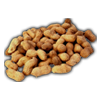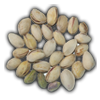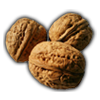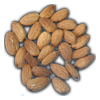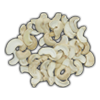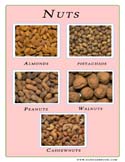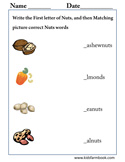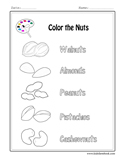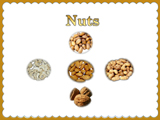DESCRIPTION:
A walnut is an edible seed of any tree of the genus Juglans, especially the Persian or English walnut, Juglans regia. Broken nutmeats of the eastern black walnut from the tree Juglans nigra are also commercially available in small quantities, as are foods prepared with butternut nutmeats from Juglans cinerea.
Walnut seeds are a high density source of nutrients, particularly proteins and essential fatty acids. Walnuts, like other tree nuts, must be processed and stored properly. Poor storage makes walnuts susceptible to insect and fungal mold infestations; the latter produces aflatoxin - a potent carcinogen. A mold infested walnut seed batch should not be screened then consumed; the entire batch should be discarded.
Walnuts are rounded, single-seeded stone fruits of the walnut tree. The walnut fruit is enclosed in a green, leathery, fleshy husk. This husk is inedible. After harvest, the removal of the husk reveals the wrinkly walnut shell, which is in two halves. This shell is hard and encloses the kernel, which is also made up of two halves separated by a partition. The seed kernels - commonly available as shelled walnuts - are enclosed in a brown seed coat which contains antioxidants. The antioxidants protect the oil-rich seed from atmospheric oxygen so preventing rancidity.
The two most common major varieties of walnuts are grown for their seeds - the English Walnut and the Black Walnut. The English Walnut (J. regia) originated in Persia, and the Black Walnut (J. nigra) is native to eastern North America. The Black walnut is of high flavor, but due to its hard shell and poor hulling characteristics it is not grown commercially for nut production. The commercially produced walnut varieties are nearly all hybrids of the English walnut.
Other species include J. californica, the California Black Walnut (often used as a root stock for commercial breeding of J. regia), J. cinerea (butternuts), and J. major, the Arizona Walnut.
Walnuts are late to bear leaves, typically not until more than halfway through the spring. They also secrete chemicals into the soil to prevent competing vegetation from growing. Because of this, flowers or vegetable gardens should not be planted too close to them.
The husks of walnut contains a juice that will readily stain anything it comes into contact with. It has been used as a dye for cloth.
|

